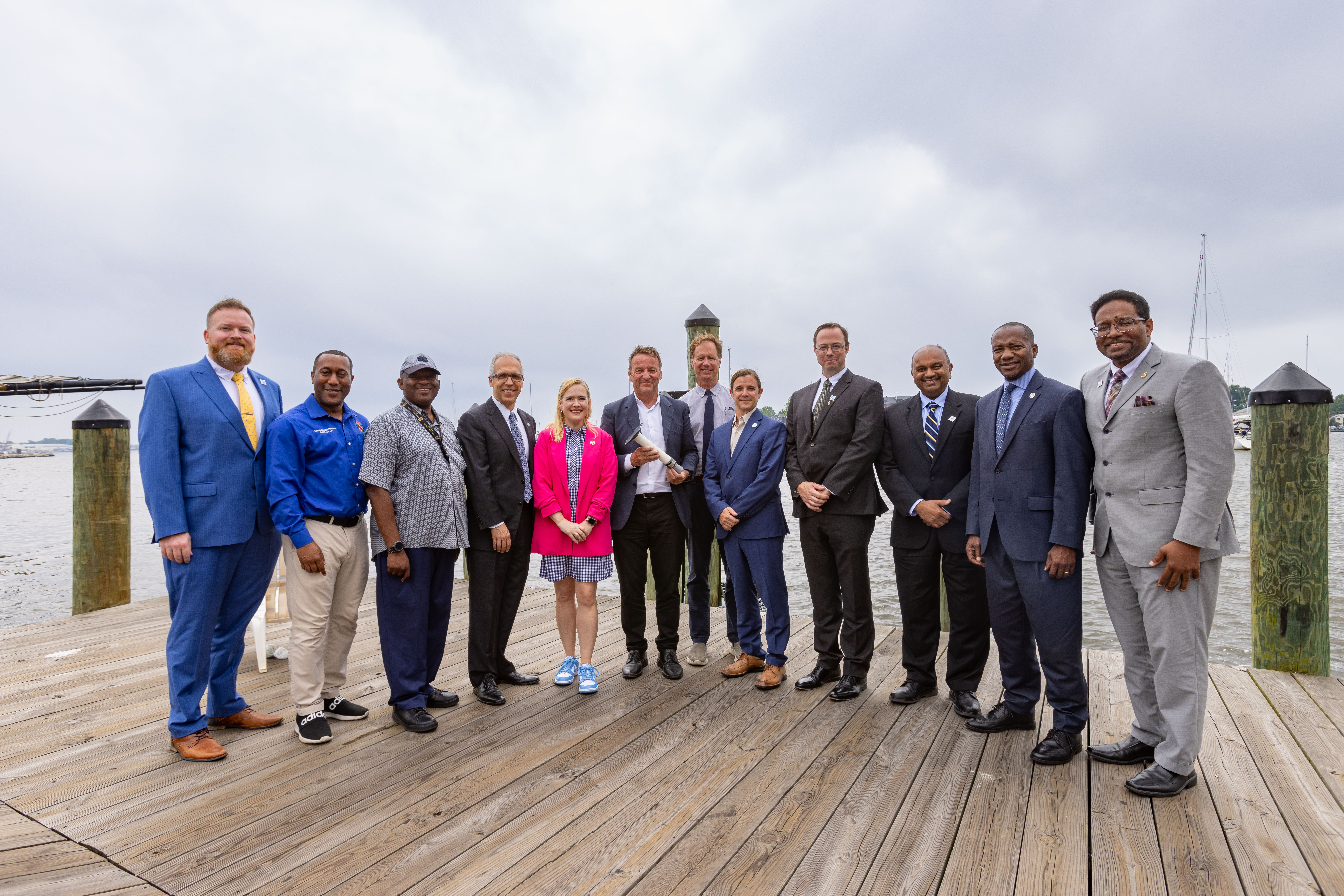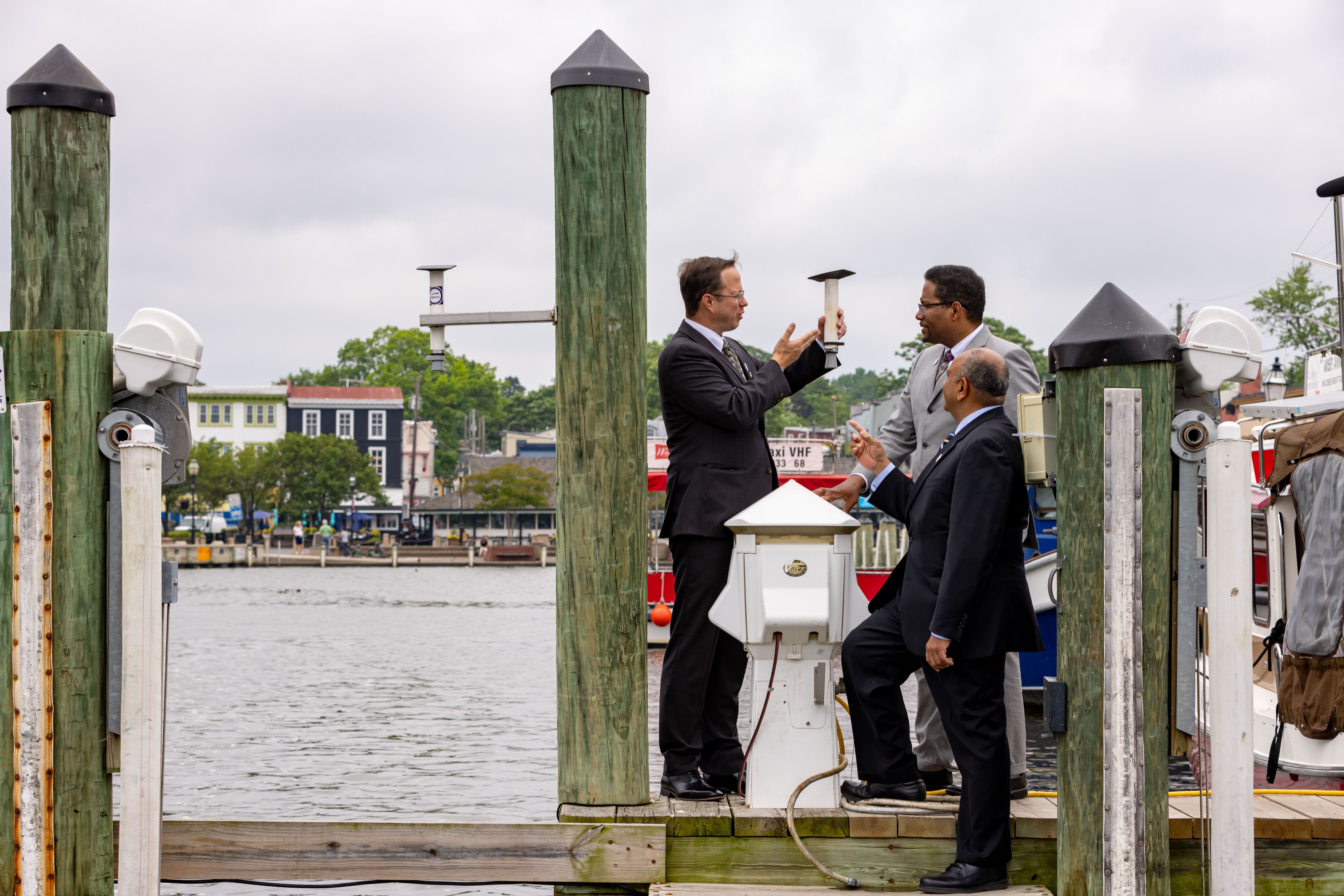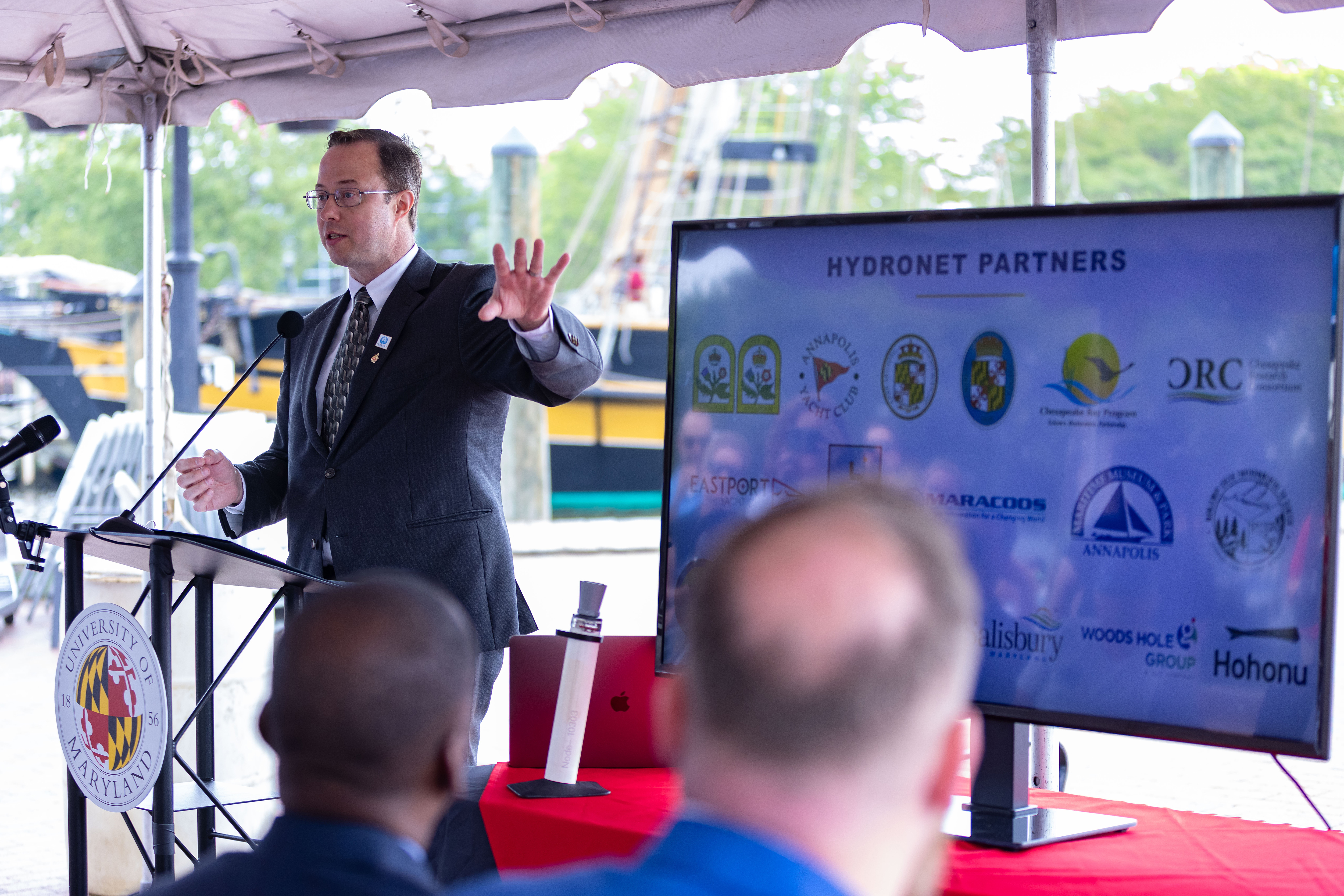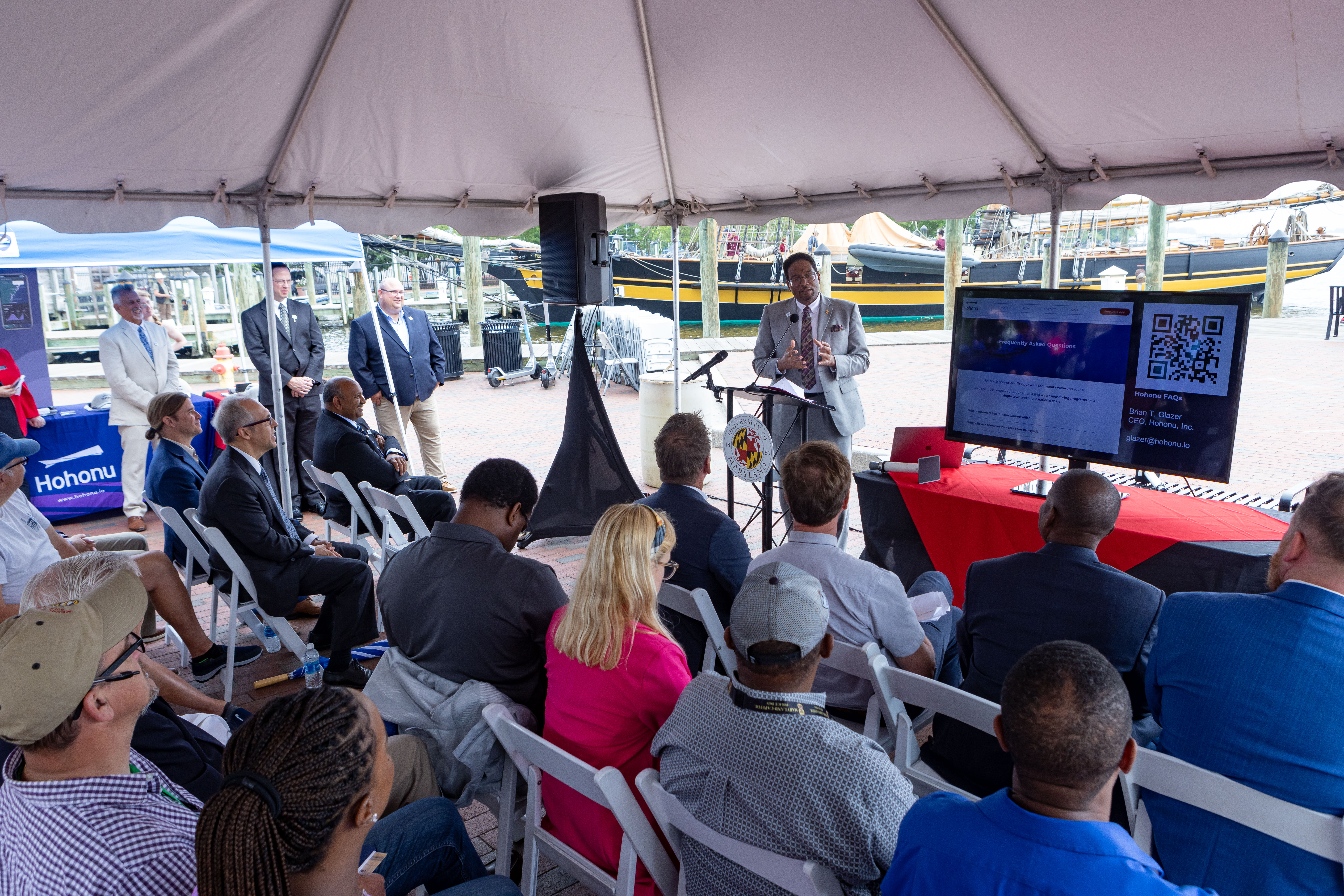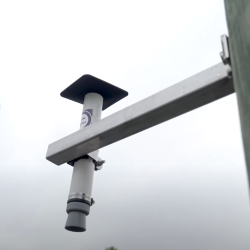UMD Leads Sensor Project to Cast a Wide “Net” to Predict, Prepare for Floods

Amid Annapolis' picturesque Colonial-era buildings, brick-lined streets and sailboats gliding along the Severn River, a small solar-powered sensor perched atop a pylon just off City Dock is easy to miss.
The modest, low-cost device, though, is the star of a new University of Maryland project to track the water level in a city all too familiar with flooding. The HydroNet, when fully installed, will be a series of more than 20 sensors along the Chesapeake Bay and its tributaries that pump out data to help researchers and local government leaders predict when, where and how much future flooding will occur.
"Projects such as the HydroNet are really the best symbol for what institutions of higher education like the University of Maryland can help accomplish,” university President Darryll J. Pines said during an unveiling event with city, state and Anne Arundel and Charles county leaders on Wednesday. “It shows how we can support the good of everyone by taking discoveries from a whiteboard in a research lab to the real world. This is how we make a real difference for real people."
Led by Atmospheric and Oceanic Science Associate Professor Tim Canty, the Maryland HydroNet is part of the Climate Resilience Network, funded by a UMD Grand Challenges Grant to prepare communities for the impacts of climate change. The Mid-Atlantic Regional Association Coastal Ocean Observing System will provide additional financial support.
“The health of the Chesapeake Bay is vital to the health of the Maryland economy, but our coastal communities face increasing flood risks as sea levels rise,” Canty said. “This project is the first step in providing the state with a larger network of water level monitors to help better allocate resources and prioritize assistance for communities facing the most imminent risk.”
Downtown Annapolis and its popular City Dock area, located near the mouth of Spa Creek, are especially prone to flooding. Home and business owners routinely place sandbags in front of their buildings to reduce damage from rising floodwaters. Hurricane Isabel devastated the area in 2003, with water reaching 5 feet above normal tidal levels. But even during heavy rainstorms, flooding can occur, shutting down city streets, harming businesses and driving tourists away.
Mayor Gavin Buckley said Annapolis was on target for record flooding this year.
“This is ground zero for sea level rise,” he said. “Part of my uniform is a pair of boots that come up to my knees.”
HydroNet is a “sibling” of the Maryland Mesonet, a $4 million Grand-Challenges-supported project that UMD’s Department of Atmospheric and Oceanic Science researchers are overseeing for the state that provides meteorologists and emergency officials with advance warning of dangerous weather through a rapidly growing network of weather towers. The project is also intended to provide farmers with actionable data on growing conditions as climate change causes weather to become more volatile.

The sensors for the state’s coastal counterpart, HydroNet, were created by Hawaii-based company Hohonu. Made of PVC-like pipe, measuring less than two feet tall, they use high-frequency sound waves to measure the distance to the water below; the system then streams those measurements to the web.
“That’s the magic, making it cheap and easy and able to be put out anywhere,” said Brian Glazer, founder of Hohonu and an associate professor of oceanography at the University of Hawaii. “The gray cone at the bottom is pinging, looking down at the water like a dolphin or a bat using sonar, and measuring that air gap distance. So as water comes up, or water goes down, it’s measuring that every second.”
UMD researchers spent the past few months meeting with local lawmakers and community members to determine the most pressing needs around flood detection and ideal locations for the sensors. They have installed six sensors so far, with others planned for Charles County, Baltimore and the Eastern Shore later this year.
Written by Allison Eatough



